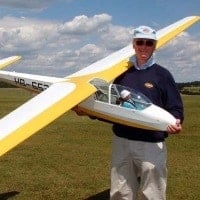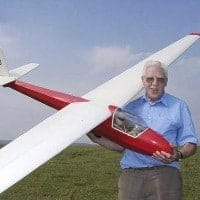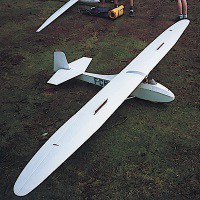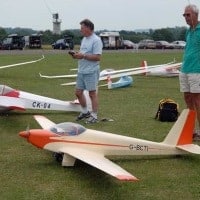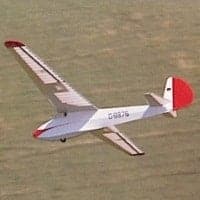Description
The Schleicher K7 Rhönadler
Aka Ka-7 or K-7, is a West German high-wing, two-seat, glider that was designed by Rudolf Kaiser and produced by Alexander Schleicher GmbH & Co.
Often referred to as the Ka-7 or K-7, the US Federal Aviation Administration type certificate officially designates it as the K7.
The Ka 7 was strictly speaking an updated Ka2b, from which were taken the wings. Instead of the wooden fuselage, which was costly to manufacture, the Ka 7 was built around a tubular steel frame as had been adopted for the Ka 3 and Ka 4. The fuselage had fabric covering over wooden formers. The two-piece hood extends over both seats the front portion of which hinges to starboard and the rear portion hinges rearwards.The original canopy, as used on the Ka 2b, was replaced later by a blown Plexiglas unit.
The fabric covered high cantilever wings swept forward 6° 36′ at the quarter-chord line and had a 4° dihedral, which allowed the flight instructors seat to lay on the centre of gravity. However the wings blocked his vision to the side, so that the instructor had only a limited view. The wings were of single-spar design and made from pine and plywood and with a plywood-covered leading edge torsion box. Schempp-Hirth air brakes were fitted above and below the wings.
Operational history
A K7 was flown to a new world multi-place glider speed record for flight around a 500 km (311 mi) triangle of 84 km/h (52 mph) in 1964 in South Africa.
Variants
Ka-2
Early version with a plywood monocoque fuselage.
K7
Main production version with a steel tube fuselage.
K7/13
K7 converted to a mid-wing arrangement, plus a single piece canopy, to resemble an AS-K 13.
Specifications (K7)
General characteristics</h4/> Crew: one
Capacity: one passenger
Length: 8.15 m (26 ft 9 in)
Wingspan: 16.0 m (52 ft 6 in)
Wing area: 17.56 m2 (189.0 sq ft)
Aspect ratio: 14.6:1
Airfoil: root: Goettingen 533 (16%), mid: Goettingen 533 (14%), tip: Goettingen 533 (14%)
Empty weight: 282 kg (622 lb)
Max takeoff weight: 484.5 kg (1,068 lb)
Performance
Stall speed: 59.3 km/h (37 mph; 32 kn)
Never exceed speed: 200 km/h (124 mph; 108 kn)
Rough air speed max: 130 km/h (80.8 mph; 70.2 kn)
Aerotow speed: 130 km/h (80.8 mph; 70.2 kn)
Winch launch speed: 100 km/h (62.1 mph; 54.0 kn)
g limits: +4 -2
Maximum glide ratio: 26:1 at ~83 km/h (52 mph)
Rate of sink: 0.70 m/s (138 ft/min) at 67 km/h (42 mph)
Wing loading: 27.34 kg/m2 (5.60 lb/sq ft)

